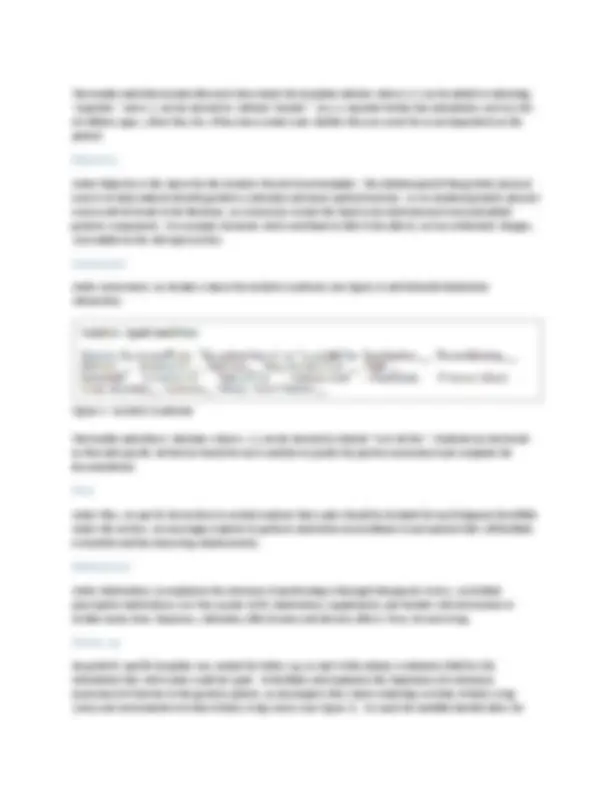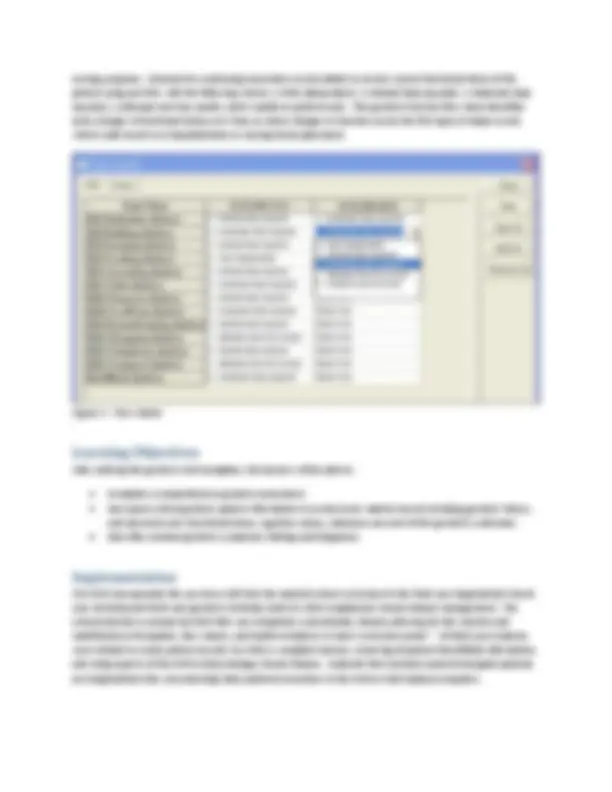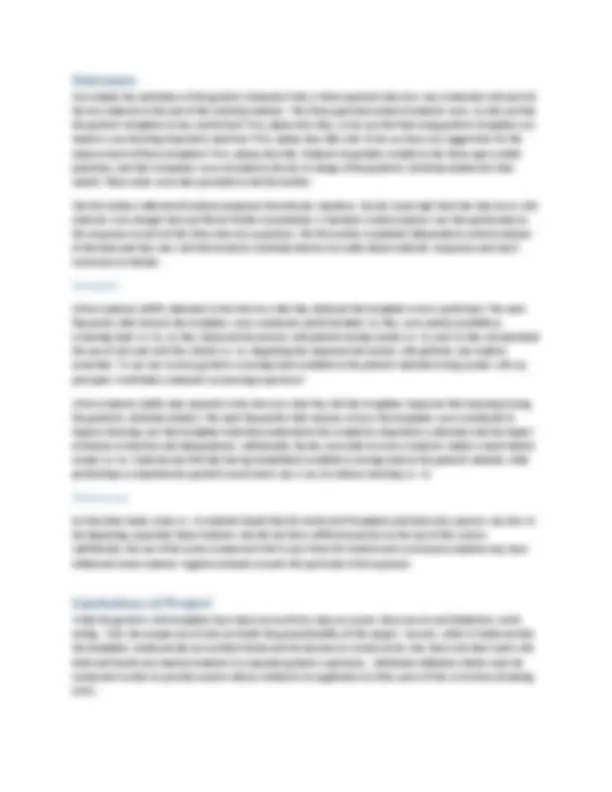





Study with the several resources on Docsity

Earn points by helping other students or get them with a premium plan


Prepare for your exams
Study with the several resources on Docsity

Earn points to download
Earn points by helping other students or get them with a premium plan
Community
Ask the community for help and clear up your study doubts
Discover the best universities in your country according to Docsity users
Free resources
Download our free guides on studying techniques, anxiety management strategies, and thesis advice from Docsity tutors
An overview of the development and implementation of geriatric EMR templates at Florida State University College of Medicine. The templates aim to guide students through critical components of a geriatric assessment, acting as guides for learners and modeling diagnostic reasoning processes. a description of the templates, their access methods, and the resources provided, such as the Instructor’s Guide and Geriatric EMR Template document.
Typology: Study notes
1 / 6

This page cannot be seen from the preview
Don't miss anything!




The aging of America will uniquely impact the type of care our students will be required to provide in the future. The geriatric population presents distinctive challenges and requires physicians to address often complex, chronic medical illnesses and geriatric syndromes. To further complicate the situation, most Electronic Medical Records (EMR) do not contain the tools necessary to care for geriatric patients, specifically the components of a thorough geriatric assessment.
In order to prepare our students to care for the aging population, independent of career choice, the Florida State University College of Medicine (FSU COM) has developed geriatric EMR templates as a tool to guide students through the critical components of a geriatric assessment. The templates can be adapted for use in clinic or hospital-based practices or in a simulated environment such as a clinical skills center.
Utilizing Dreyfus’ novice through expert model to contextualize the program, the templates are designed to provide a framework by which the novice medical student is able to build geriatric-specific knowledge while applying such knowledge to a patient’s case.^1 The condition-specific templates act as guides for the learners, thus modeling the diagnostic reasoning process.^2
The Geriatric EMR Template program includes the following files:
Instructor’s Guide – Provides the background, description and instructions for deployment. Geriatric EMR Template document – The geriatric templates have been collapsed into a word document to allow interested programs the ability to adapt the work into their institutional EMR systems (which vary by institution).
This project involved “geriatricizing” the EMR through the creation of geriatric templates so that it could be used to enhance geriatric education in the required Geriatrics Clerkship. The ultimate goal was to demonstrate to students methods that can be used to improve the care of geriatric patients through utilization of templates.
Templates in the EMR are accessed using macros (codes) or combinations of keystrokes that, when typed, expand into larger sections. They can be typed or accessed from a menu item available on the EMR’s tool bar. These codes were given titles beginning with the word “Geri” so that they could be easily found in the code lists. For example, by typing the word GeriPE and then hitting the space bar, the full Geriatric Physical Exam template appears in the chart ready for completion.
To identify template items to be added to the EMR, an extensive review of the existing literature was conducted for all available geriatric documentation and assessment tools. PubMed Medline searches were conducted with no date restrictions using the following search terms: geriatrics; geriatric assessment; electronic medical record; electronic health record; education, medical; templates and long term care. Additionally, all curriculum materials
were reviewed, and a number of faculty geriatricians were consulted on standards of practice.3, 4^ The core components necessary to be included in a complete geriatrics assessment of a patient were determined and thus added to the geriatric template.
We selected the geriatric assessments, tools and screening tests which are best aligned with the goals and competencies of the clerkship to include in the geriatric physical exam, created macros for those tools, and added them to the appropriate section of the Physical Exam template. Verified assessment tools, such as the Get Up and Go Test and the Performance Oriented Mobility Assessment (POMA), were added to the Musculoskeletal section; the Confusion Assessment Method (CAM) and a rapid Alzheimer’s screening test (Mini-Cog) were added to the Neurologic section; and the two-question mood screen, Patient Health Questionnaire (PHQ9) and the CAGE alcohol screening test were added to the Psychiatric section. The scoring instructions were included in each assessment template tool to facilitate training on interpretation of results. Encounters in this particular EMR were set up with the following fields: Subjective, Objective, Assessment, Plan, Medications and Follow-up.
Subjective
For the Full Geriatrics Assessment template, under Subjective, we include the goals for assessment, admission, or discharge to include the patient’s goals, family’s goals, and provider’s goals. Also under Subjective are the functional history components including the premorbid and current functional status. The geriatric review of systems, review of dementia-related symptoms, geriatric social history and geriatric family history, complete the Subjective template. We could not find in the literature standardized components of the geriatric assessment that fit our teaching objectives. Therefore, we designed original, specific templates for Premorbid Functional Status, Geriatric Social History, Family History, and Review of Systems. Each of these sections was then developed as macros which could be expanded and used or deleted if deemed unnecessary. Figure 1, for example, presents the Geriatric Social History template which is inserted by typing GeriSHx and pressing the space bar.
Figure 1 – Geriatric Social History
scoring purposes. Columns for continuing encounters can be added to record current functional status of the patient using pick lists with the following choices: 4-fully independent, 3-minimal help required, 2-moderate help required, 1-attempts task but unsafe, and 0-unable to perform task. This geriatric function flow sheet identifies early changes in functional status over time, as minor changes in function can be the first signs of major events which could result in re-hospitalization or nursing home placement.
Figure 3 – Flow sheets
Learning Objectives
After utilizing the geriatric EMR templates, the learner will be able to:
Complete a comprehensive geriatric assessment. Document critical geriatric patient information in an electronic medical record including geriatric history and physical exam, functional status, cognitive status, substance use and risk for geriatric syndromes. Describe common geriatric symptoms, findings and diagnoses.
Implementation FSU COM incorporated the use of an EMR into the medical school curriculum in the third year longitudinal chronic care clerkship and forth year geriatric clerkship, both of which emphasized chronic disease management. The school selected a commercial EMR that was completely customizable, thereby allowing for the creation and modification of templates, flow sheets, and health reminders to meet curriculum needs.^5 All third year students were trained to create patient records in a HIPAA-compliant manner, removing all patient identifiable information and using aspects of the EMR to help manage chronic disease. Students then tracked a panel of assigned patients at a longitudinal clinic, documenting these patient encounters in the EMR on their laptop computers.
Outcomes To evaluate the usefulness of the geriatric-enhanced EMR, a three-question interview was conducted with each of the ten students at the end of the clerkship rotation. The three questions asked of students were: (1) Did you find the geriatric templates to be a useful tool? If so, please describe; (2) Do you feel that using geriatric templates can improve your learning of geriatric medicine? If so, please describe; and (3) Do you have any suggestions for the improvement of these templates? If so, please describe. Students responded verbally to the three open-ended questions, and their responses were recorded by faculty in charge of the geriatrics clerkship rotation for that month. These notes were then provided to the first author.
The first author collected all student responses from faculty members. Faculty transcripts from the interviews with students were merged into one file for further examination. A thematic content analysis was then performed on the responses to each of the three interview questions. The first author completed independent content analyses of the data and then met with the Geriatrics Clerkship Director to confer about students’ responses and reach consensus on themes.
Strengths
All ten students (100%) indicated in the interview that they believed the templates to be a useful tool. The most frequently cited reasons the templates were considered useful included: (1) they were readily available as screening tools (n = 9); (2) they improved discussions with patients during rounds (n = 5); and (3) they incorporated the use of ADL and IADL flow sheets (n = 4). Regarding the improved discussions with patients, one student remarked, “It was nice to have geriatric screening tools available at the patient’s bedside during rounds with my preceptor. It definitely enhanced my learning experience”
All ten students (100%) also reported in the interview that they felt the templates improved their learning during the geriatrics clerkship rotation. The most frequently cited reasons on how the templates were considered to improve learning was that templates help them understand the complexity of geriatric syndromes and the impact of disease in function and independence. Additionally, faculty were able to review students’ shadow charts before rounds (n = 8). Students also felt that having immediately available screening tools at the patient’s bedside while performing a comprehensive geriatric assessment was a way to enhance learning (n = 4).
Weaknesses
On the other hand, some (n = 3) students found that the retrieval of templates and data entry process was slow in the beginning, especially those students who did not have sufficient practice on the use of the system. Additionally, the use of the same commercial EMR in year three for student and curriculum evaluation may have influenced some students’ negative attitude towards this particular EMR in general.
Limitations of Project While the geriatric EMR templates have been successful by many accounts, there are several limitations worth noting. First, the sample size of only ten limits the generalizability of this project. Second, while it is believed that the templates would provide an excellent framework for learners at various levels, they have only been used with third and fourth year medical students in a required geriatric experience. Additional validation studies must be conducted in order to provide sound evidence related to its application in other years of the curriculum (including GME).